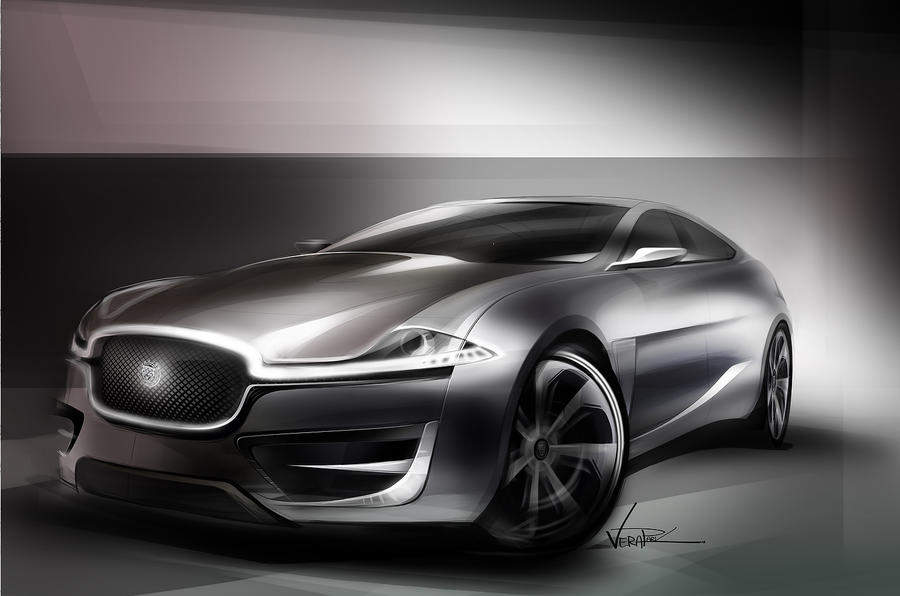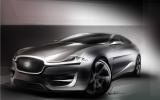Jaguar has met and cleared some mighty hurdles these past few years. Finding an all-new design style and applying it successfully to the new XK, Jaguar XF and Jaguar XJ saloons is a huge achievement. So is launching the Jaguar F-Type roadster, surely the most eagerly awaited sports car for some time.
Yet the removal of these hurdles serves only to reveal the toughest of all: Jaguar’s plan to produce a BMW 3-series rival, a car whose sales success could at last make Jaguar a reliable profit earner like its super-successful Land Rover stablemate. Although the new baby Jag is only a couple of years away, the company has so far proved remarkably adept at keeping its all-important shape away from prying eyes, especially our own.
Yet Autocar’s readers must not be denied. We can’t yet see into Jaguar’s inner design sanctum, so instead we put the task of creating an all-new D-segment Jaguar saloon for 2015 to some of the UK’s best car design students – the latest final-year postgraduate crop at London’s respected Royal College of Art – on the rationale that they’ll be the people creating such cars in a few years’ time. The RCA has trained many of the world’s most accomplished designers over five decades and annually recruits about 30 students from varied backgrounds at this time of the year.
All second-year students took part in our baby Jaguar competition. It was labelled ‘Project No Tech’ because the idea was to convey a plausible ‘look’ for the car entirely through sketches. The idea was to show as much knowledge of Jaguar’s past and present as possible. The ten best were pre-selected by RCA staff, including visiting professor Peter Stevens (forever famous as the designer of the McLaren F1) and Matt Humphries, former head of design at Morgan, now with his own consultancy.
The ten were reviewed by me, and with more help from RCA staff we first selected three standout entries and then – after much energetic discussion – a winner.
A narrow but unanimous winner, Korean-born Vera’s Jaguar took the decision on three important grounds: for “glamour”, for which a car entering this tough segment so late will undoubtedly need to be noticed; for the way judges felt that it acknowledged past and contemporary Jaguar design cues; and for an interesting use of light to define the whole of the car’s frontal features, greatly enhancing its identity in traffic and at night. The car had fine but believable proportions, plus “a classic feel”, the judges felt, and while indisputably modern, it avoided one of the key pitfalls of young designers’ work, which is to be too advanced for the chosen production date.
One key factor, if you’re going to give a small premium car the impact it needs, is to get the stance exactly right, says Yalim Erkaya, who hails from Turkey. For this exercise, he focused on the car’s silhouette — and stance. And because the proposed date for the design is only two years away, he worked hard to get the car’s volumes and door sizes looking believable, using long, straight lines to make the car look larger than it is and a fastback tail with a short overhang to combine practicality with sportiness. Judges admired the sculptural body sides, which helped to make a particular highlight of the rear shoulders and wheel arches.











































Join the debate
Add your comment
In the real world...
where there are real people who need real catrs, fun to drive...etc, this design is bollocks. You cannot see out of the damn thing, not to mention the fish face. One more design coming from out of some one's fantasy that does not fulfill the needs of the actual driving/buying public.
The effort on the part of Autocar needs to be praised. What is missing, from the looks of the above design, is the practical parameters for this particular niche in the market. Next time....
All very well
All this slinky design is very welcome, however there must be more "underlying quality"..boring things like the quality of the wiring, switches, paint rust proofing and external fixtures and fittingsetc, things that will leave older jags( 10 years plus) "looking good" like bmw's audi and merc, if it has the build quality of a mass produced car then jaguar have not learned anything, jaguar are not known for producing ugly cars and that goes back before I was born, what I feel their problem has been is that they are not actually any better made than "normal" cars and so people lack confidence in ownership.
The gin swilling image may have a little to do with it.
I hope it does well
Agree with the comments that
Agree with the comments that the modern D segment market contenders look overly agressive.
However, making it look like a 'friendly' E type could end up with something like a Ford Scorpio.
Agressive is what sells to pushy middle management types.
Will86 nails it on the head, they need to work at getting lease hire variants for a competitive price. The reason the 3 series sells is because corporate lease on these are lower cost than an equivalent Mondeo!